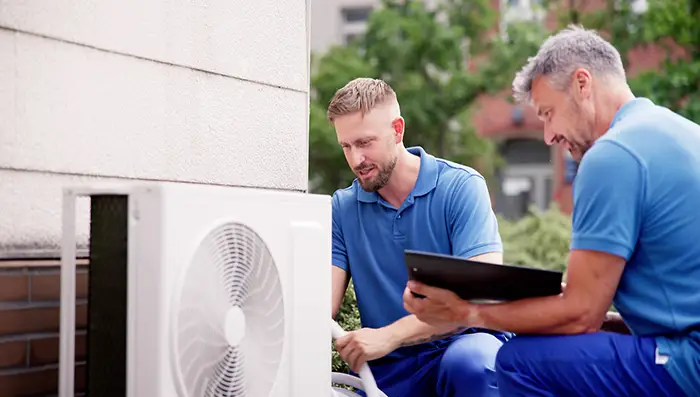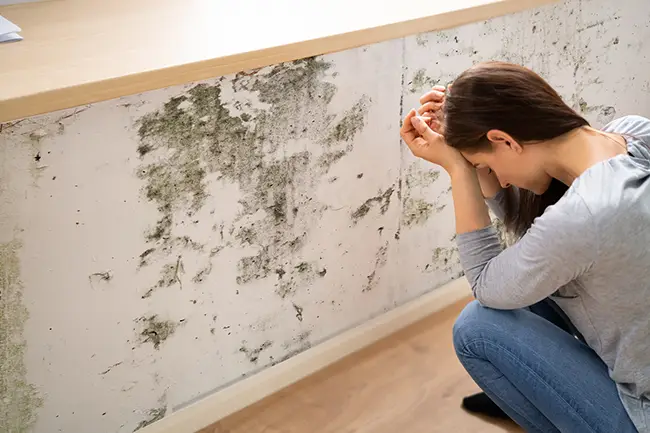Common Red Flags During Home Inspections
Published on May 9, 2024 | 4 Minute read

Melanie
Ortiz Reyes
Content Specialist
Purchasing a home is one of the most significant investments you’ll make, and a thorough home inspection is a vital step in ensuring that you're making an informed decision. While every home is unique, there are common red flags that can surface during inspections, signaling potential issues that warrant further investigation or negotiation. Now, let’s explore these red flags in detail.
1. Structural Integrity Concerns
A home's structural integrity is paramount to its safety and long-term durability. During inspections, be wary of signs such as cracks in the foundation, sloping floors, uneven walls, or doors that don’t close properly. These issues may indicate underlying structural problems such as foundation settlement, poor soil conditions, or compromised load-bearing walls.
2. Roofing Issues
The roof is your home's first line of defense against the elements, and its condition is critical. Look for signs of aging or damage such as missing or damaged shingles, sagging areas, leaks, or water stains on ceilings and walls. A thorough inspection should also assess the condition of flashing, gutters, vents, and chimney structures for potential issues.

3. Electrical System Deficiencies
Electrical problems pose significant safety hazards and should not be overlooked. Red flags during inspections may include outdated wiring, overloaded circuits, improperly installed outlets or switches, flickering lights, or evidence of previous electrical fires or damage. Ensure that the electrical system meets current code requirements and is safe for daily use.
4. Plumbing Challenges
Plumbing issues can lead to water damage, mold growth, and costly repairs if not addressed promptly. Watch for signs such as low water pressure, leaks or water stains around fixtures and pipes, slow drainage, water discoloration, or evidence of previous water damage repairs. Inspectors may also assess the condition of water heaters, sewer lines, and plumbing fixtures for performance and safety.

5. HVAC System Problems
Heating, ventilation, and air conditioning (HVAC) systems play a vital role in maintaining indoor comfort and air quality. Red flags in HVAC inspections may include inconsistent temperature regulation, unusual noises or odors from units, outdated or malfunctioning thermostats, clogged ductwork, or signs of inadequate maintenance. Ensure that HVAC systems are properly maintained and serviced for optimal performance.
6. Mold and Moisture Issues
Excessive moisture and mold growth can indicate underlying problems such as water intrusion, poor ventilation, or plumbing leaks. Inspectors may identify mold or mildew odors, visible mold growth on walls, ceilings, or in crawl spaces, water stains, warped surfaces, or musty odors in certain areas. Addressing moisture issues promptly is essential to prevent further damage and potential health hazards.

7. Pest Infestations
Pests such as termites, rodents, ants, or cockroaches can cause structural damage and compromise a home's integrity. Signs of pest infestations during inspections may include visible pest droppings, gnawed wood or wiring, hollow-sounding wood structures, termite tubes or nests, or audible sounds of pests within walls or attics. A professional pest inspection may be necessary to assess and address infestations effectively.
8. Insulation and Energy Efficiency
Proper insulation and energy-efficient features are crucial for maintaining comfortable indoor temperatures and reducing utility costs. Inspectors may identify inadequate insulation levels, gaps or leaks around doors and windows, drafty areas, outdated or inefficient heating and cooling systems, or lack of energy-efficient upgrades such as double-pane windows or insulated doors.

9. Foundation and Moisture Damage
A stable foundation is important for a home's structural integrity. Red flags related to foundations include cracks in basement walls or floors, uneven settling or shifting of the structure, moisture or water intrusion in basements or crawl spaces, mold growth, or visible signs of previous foundation repairs. Addressing foundation issues early is key to preventing further damage and costly repairs.
10. Environmental Hazards
Lastly, be aware of potential environmental hazards that may impact the property's safety and habitability. Inspectors may identify issues such as asbestos-containing materials, lead-based paint hazards, radon gas levels, mold or indoor air quality concerns, or underground storage tanks. Addressing these hazards may require specialized testing and remediation by qualified professionals.
A thorough home inspection is a vital step in the home buying process, providing valuable insights into the property's condition and potential areas of concern. You can make informed decisions and negotiate effectively with sellers by being aware of common red flags during inspections. Collaborating with experienced inspectors, real estate agents, and professionals can further enhance the inspection process and ensure a smooth transition to homeownership. Remember, investing in a comprehensive inspection today can save you from costly surprises tomorrow!